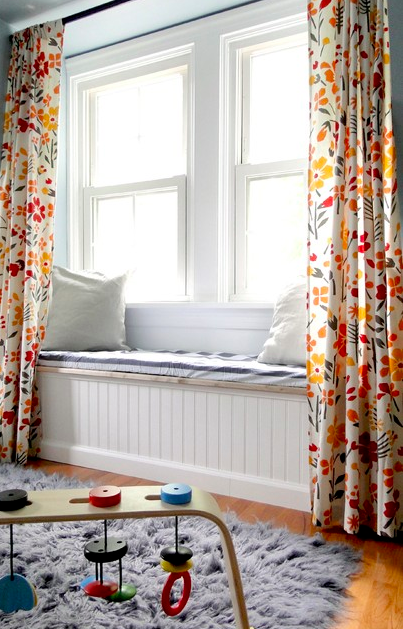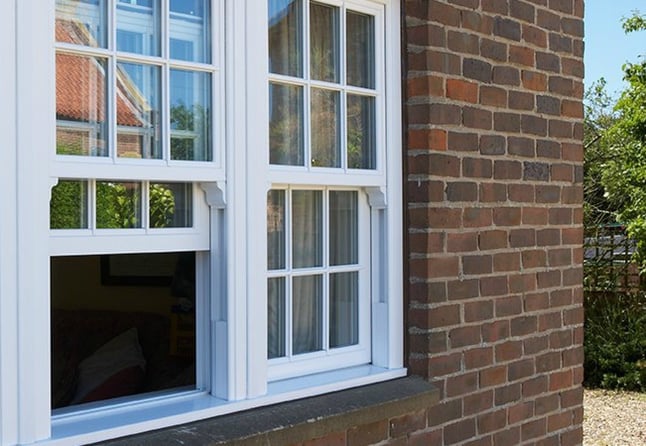When draught proofing sash and casement windows to stop those cold draughts from coming into your home, the trick to getting a good seal is to understand the characteristics of the window. After all, the way sash and casement windows operate is entirely different. So, the way to draught proof the different types of windows is going to differ as well.
Here are the details on how draught proofing sliding sash windows and casement windows works.
Where Draughts Are a Problem with Sash and Casement Windows
With sash windows, there are movable panels that slide up and down to open or close the window. With double hung or single hung windows, cold air can enter under the sash and above the windowsill. Draughts can also come in around the sides of the window, between the sashes and the frame, and in any gaps around the middle rail.

Casement windows are different because there is no sliding. They have a hinge, either on the side or the top, just like a door. Then the sashes open out, with the leading edge of the sashes going out when you open the window.
With this type of window, often there is a larger gap around the leading edge. What happens is, over time the building will settle, which can cause the sash to shift slightly. So, when you are draught proofing casement windows, you have to account for the uneven gap – it’s wider at the leading edge and then, where the hinges are, it's usually very tight.
It’s so tight around the hinges, in fact, that when people go and put up a foam tape to seal against draughts and they don’t open the window all winter, the adhesive ends up getting stuck on the frame. Then, when they go to open the window months later, part of the frame gets torn.
The more uneven areas along the joinery of your timber windows, as well as any cracks or gaps that can develop – and worsen – over time, the more cold air currents that can find their way into your home. These gaps are where air is leaking through. They also contribute to unwanted heat loss and in the summer, you can get some warm air coming into your home through these spaces.
When draught proofing sash and casement windows, you want to identify the characteristics, not just of the type, of each individual window. Even in the same house, some will have things like wider gaps around the leading edge or extremely tight spaces on some edges of the sash. To get the best results, your draught proofing needs to take these nuances into account.
How to Draught Proof Sash Windows
So, how can you stop draughts from coming into sash windows?
For sash window draught proofing, the goal is to seal off the areas around the sashes like the space above the windowsill and the middle rail.
To do this, some property owners use a self-adhesive foam tape. But, it is extremely difficult to create a tight and even seal around the sashes. Also, these external seals tend to fall off once you open the windows.

The best way to approach sash window seals is to use the right dimensions (most seals can be cut to size) and type of draught excluder for the different parts of the window. At Thermawood, we primarily use rubber draught seals because they offer the best results. They stop draughts while at the same time improving the acoustic performance of your windows.
When we take down the sashes when retrofitting the windows and putting in double glazing, we put in draught seals as standard. As the sashes are already down, we can ensure the joinery is perfectly even and machine the rubber seals directly into the window.
But, with sash windows, you’ll also sometimes have tighter spaces along the middle rail and down the sides. In these places where you can get zero compression, a brush seal works well. We use a fin seal with a mohair brush, which crushes right down to almost nothing.
When you seal a sash this way, you stop the air leakage as much as is possible. But, you can slide open your windows with ease.
How to Draught Proof Casement Windows
For casement windows, usually, there is a lot of attention that needs to be put on the size of the gaps because they are likely uneven. Then, it’s all about getting a precise fit with the seals on each part of the window.
There can’t be any neglected gaps or uneven areas or the draughts can still come through.

We use silicone rubber seals for casement windows. Just like with sliding sash windows, we machine the seal into the timber joinery. This way, the windows don’t look different – there are no awkward-looking seals stuck onto the frame or the sashes.
Also, the windows will operate beautifully, opening and closing seamlessly so you can ventilate your house all-year long without worrying about draught seals falling off or your window getting stuck around the hinges.
Why Draught Proofing the Right Way Is So Important
As much as 25% of heat loss is caused by the air leakage where your draughts are likely coming in around your windows. Draught sealing your windows, along with insulating them with double glazing, is the key to achieving significant results – better energy efficiency, lower energy bills, and a level of comfort in the home you may never have even realised was possible. Until, of course, you experience the difference for yourself.
To learn more about how draught proofing works, download our guide, “The Ultimate Guide to Draught Sealing Windows and Doors.”






